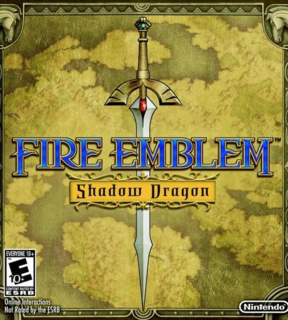Some say, been there, done that, we should ask, why aren't newer SRPG's as well-designed as this older game?
The story: a man is out to save his kingdom. End of story. Now on to the gameplay.
In this area, FE has a lot going for it. First, as compared to many strategy games, the maps are quite sizeable giving you a sense that you will have to, in good military fashion, cover some ground in order to prevail. Second, along these lines, the maps often alternate between outdoors and indoor environments. This is a nice design choice as you the decisions you will have to make in close quarters are different that the ones out in the open. For example, if you trap your Dracoknight class character in a hallway with archers a few spaces away, kiss that character goodbye.
One of the best aspects of Fire Emblem's design is the sense of control and immersion while on the battle field as well as the small choices you'll have to make in order to keep the battle in your favor. Weapons have a limited life,so it is entirely possible you'll use a weapon for the last time while in the middle of a battle. Marth, the lead character, also serves as a convory - if you pull up next to him, you can access your whole inventory and replenish your stock. This is simply but adds the sense of having to manage a whole campaign, not just units on a grid. Similarly, when a character dies, he or she is gone for good - no miraculous recover back at the base. This forces you to really weigh the rock/paper/scissors consequences of your choices. Again, that Dracoknight is a great character - do you really want her to get shot down by an archer in one turn because of sloppiness, knowing that you can't get her back?
On this note, FE is also great in allowing you to switch a character between multiple classes in preparation for a battle. While FE isn't the only one to do this, it isn't done frequently enough. Why go into a mostly indoor environment with air units when you can put Heroes up front with Bishops and archers in back and move as large unit to your destination.
Most SRPG's give you a turn limit for you to accomplish your goal. This has always seemed a bit artificial to me and FE foregoes this option. This gives you time to really map out a course of action as well employ contingency measures such as replenishing your weapon from the convoy. For instance, every map has houses and villages. It is very much worth stopping at these places, for they will usually clue you to an enemy character that can be recruited to your side if you have Marth or another character speak with him or her first before they get killed. This adds to a sense of a dynamic battle field. Similarly, villages will either give you money or weapons, or offer up a powerful new recruit.
FE is not perfect. Maybe the least well designed aspect of the game is the armory. Your base armory never changes its inventory, so unlike Disgaea, there's no sense of excitement in revisiting. However, this does force you to visit armories on the maps since they sometimes carry more powerful items. Maybe most frustrating is the forging system. First, since every weapon has a limited use and since you don't have a lot of money, it isn't always sensible to spend a lot of money to make a weapon a game changer. Maybe more disappointing is that you are limited to forging only one weapon per base visit. With up to 15 characters in your party and dozens of weapons, being limited to improving one at a time seems like a tactical drop in the bucket and unncecassarily constraining.
The graphics in FE will appeal to you depending on your tastes. I like the washed out grays and drab character designs. First, they are a nice change from the extravagant designs of most JSRPG's, such as those in Luminious Arc. But, also, I think they fit the theme of dark medieval times.
In all, i think Fire Emblem is a gem, and though it's a remake, the real question is, why is it still so much ahead of the curve? Until someone can convince me that it isn't compare to most games, the fact that it's a remake remains irrelevant.

